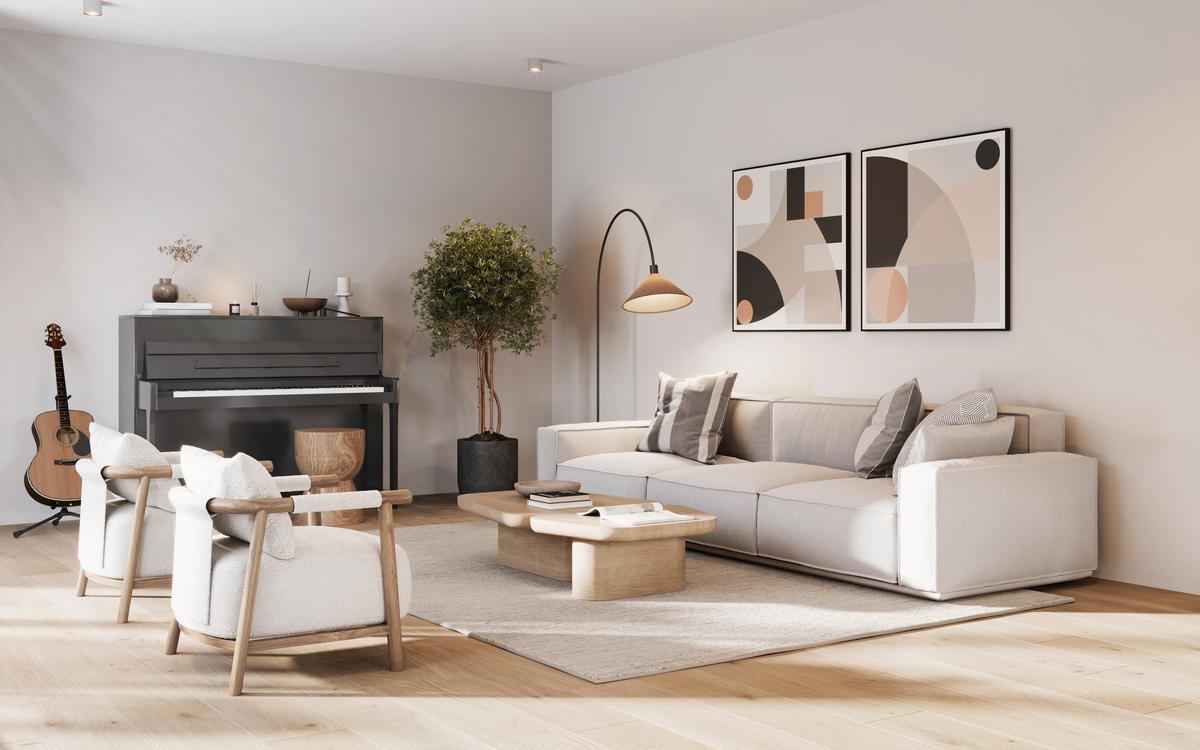Exploring the world of interior design and learning from the experts can set you on the path of rediscovery. You will begin to see your living spaces in a different way and enjoy decorating your home like a pro. Here are a few tips to get you started.
1. Mastering the art of scale
In the realm of interior design, size matters. Scale, or the relative size of furniture and objects in relation to your room’s dimensions, plays a pivotal role in achieving a balanced and inviting space.

Avoid the common pitfalls of using too-small furniture in spacious rooms, which can make them feel empty, or oversized pieces in compact spaces, leading to a sense of overcrowding. Discover the magic of appropriately scaled furnishings, rugs, and art pieces, as they can turn your space into a polished and harmonious retreat.
2. Blending modern and traditional styles
Interior design doesn’t demand a strict commitment to a single style. In fact, blending unique styles and textures can infuse your home with character and personal flair. Embracing both modern and traditional elements can result in a dynamic and unique living space.

To achieve this blend, experiment with a mix of modern and traditional furniture pieces. For example, you can combine a mid-century modern side chair with streamlined side tables and a Chesterfield-style sofa. This delightful mix of modern and traditional elements can bring charm and sophistication to your home. The fusion of styles creates an intriguing juxtaposition that adds depth to your design.
3. Design essentials: lighting, artwork, and textiles
To elevate your home interiors, focus on three essential elements: lighting, artwork, and textiles. These components contribute significantly to the overall look and feel of your home. Proper lighting can transform the mood of a room. It’s essential to consider the function of each space and incorporate suitable lighting. In a medium-sized room, aim for at least three sources of light, including table lamps, overhead pendants, and floor lamps. Dimmable lights offer flexibility in setting the mood for various occasions.

Incorporating various lighting options can change your room from bright and lively to cosy and intimate, depending on your needs.
Artwork adds an individualised touch to your space, making it unique and expressive. You don’t need to invest in expensive pieces; even an affordable or DIY artwork can have a significant impact.

You can also create a gallery wall to blend your television seamlessly into your design. This technique transforms the TV into a piece of art, enhancing the room’s aesthetic.
Textiles play a vital role in interior design as they influence the colour palette and contrast in your design. Mixing different textures and materials adds depth and dimension to your space. Rugs, curtains, pillows, and throws are key elements in creating a cohesive and inviting atmosphere.

In fact, a creative way to highlight an expensive rug is by hanging it on the wall. By selecting textiles thoughtfully, you can create a personalised and inviting atmosphere that reflects your style and preferences.
4. Embrace the power of colour
Colour is a potent tool in interior design, capable of transforming the mood and character of a room. To decorate your home like an expert, embrace the power of colour strategically.
Start by choosing a base colour for your space. Neutrals like whites, greys, and beige serve as excellent starting points. These neutral tones create a versatile canvas for your design, allowing you to experiment with pops of colour.

Use colour to highlight specific areas or elements in your room. Consider bold accent walls, vibrant artwork, or colourful throw pillows and accessories. These splashes of colour can inject energy and personality into your design.
Additionally, don’t overlook the importance of colour psychology. Distinct colours evoke different emotions and moods. For instance, blues and greens can create a sense of calm and tranquillity, while warm tones like reds and oranges add vibrancy and warmth. Choose colours that align with the ambience you want to create in each space.
5. There’s no thing as too many plants
Incorporating plants into your home decor is a key element of interior design. You can never go wrong with having an abundance of plants in your home. Not only do plants bring a refreshing touch of nature indoors, but they also contribute to better air quality while creating a serene atmosphere.

Consider various indoor plants, from low-maintenance succulents to lush, leafy varieties, and strategically place them throughout your home — corners, near windows, or on shelves — to enhance the overall decor. Peace lily, monstera, snake plant, and elephant ear plant are some of the most loved indoor plants.
The writer is Head of Design and Innovation, Bonito Designs.

COMMents
SHARE